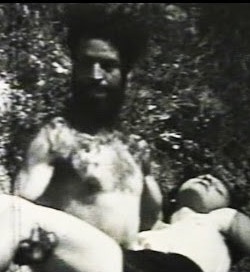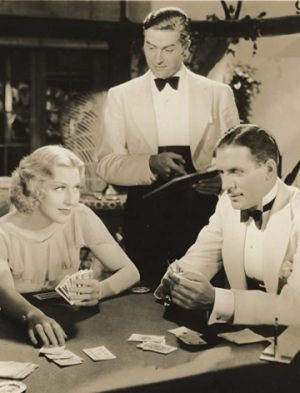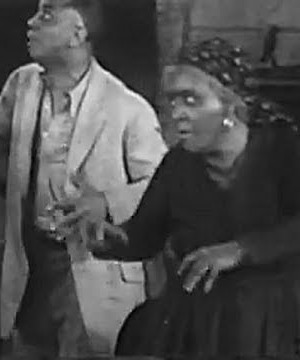
WWI Capt. Richard (Saverio Yaquinto) takes off in his biplane to scout enemy positions. He’s shot down and ends up lost in a jungle, where he turns savage, which includes growing some rather unlikely globs of hair that seam glued to his shoulders. Eventually another pilot lands in a clearing in the jungle and Richard strangles him and steals the plane. He runs out of gas and lands near a mad scientist’s house. The scientist immediately injects him with a “diabolic” drug that brings out the lust in Richard, who escapes and begins kidnapping local women and taking them to his cave. Who will stop this human beast? Well, I can assure you it won’t be the unruly sailors who are hired for the job and die really easily.
El hombre bestia {The Beast Man} is Argentina’s first horror film, and according to Janne Wass on Scifist, there was not another for eight years (which saved me all kinds of time searching). There’s a solid argument that it isn’t a horror film, but an action flick modeled after American serials (the second part of the title is Or The Adventures of Captain Richard). There’s a better argument that it isn’t any kind of film at all. Made not by an experienced filmmaker, but by journalist C.Z. Soprani, El hombre bestia appears to be the result of a hobbyist playing around in his free time, not someone seriously trying to make a motion picture, and then trying to make a few pesos at small-town theaters that weren’t able to get real movies and in private screenings. With that title it could attract a few horror fans or a few adventure fans, and once they’ve paid, it doesn’t really matter what you show them if you aren’t planning on sticking around.
El hombre bestia was considered a lost film, which makes it sound far more important than it is. No one considers the video I took at a convention in 1999 a lost film just because I don’t have it any more. No one it seemed, including Soprani, bothered keeping it around. But in the years it was missing, it gained a mystique. It was, after all, Argentina’s first horror film, so it must be significant. There’s even a documentary about it now, which is massively better than the film itself; its main weakness is having a subject not worthy of a documentary. And it turns out someone—a child of one of the amateur actors—had a copy that got ported to VHS (and in so doing, destroyed the film) as you might an old home movie. So now we can all see a poor copy of a film that doesn’t deserve that much.
Soprani had gathered a few non-actors together, pointed his camera in their general direction and then they moved around, some like Yaquinto, energetically, but mostly slowly and with no real idea what they were doing. Well, Soprani had no idea, so why should they?
Argentina had a small silent film industry primarily in Buenos Aires, but things took off when sound arrived. It was a lot easier for Hollywood to dominate non-English speaking countries when language wasn’t in the equation. So by 1934 Argentina was pumping out Spanish language pictures with tango soundtracks. As El hombre bestia can barely be called a movie, it bucked this trend. It’s essentially a silent picture, complete with intertitles, that occasionally has a scene with dialog—dubbed after filming. None of those involve Captain Richard, who runs about abducting women without even sound effects—just a loud classical score. One of the more amusing aspects, and one that would make a great drinking game, is how the booming music will cut out when we enter a talkie moment, and as soon as the dialog is complete, the music returns.
The editing is…odd. Best I can tell, scenes often start or stop with a piece of cardboard slowly being pulled across the camera lens. It’s a technique whose time has never come.
I’ve seen others say that Soprani used a great deal of “stock footage” but that’s being too charitable. A more accurate description is that he stole chunks from other films and stuck them in his. The only good looking scenes are the charging soldiers and dueling planes at the beginning, all of which was lifted from real movies. I do, however, believe that the pointless beach scene could be stock footage, although I think it is more likely Soprani’s family vacation film.
It’s unfair to call El hombre bestia a horrible film because it isn’t a film. It’s a sad little joke, or a con, or something just fiddled around with. However, it can be amusing to watch in the right state of mind, which would drunk.


 The newest, and much inferior version replaces a court scene with a swordfight, which would normally be a reasonable way of increasing the excitement. But it doesn’t work, in part because the fight is just standard violence where the court scene holds a much more poetic revenge.
The newest, and much inferior version replaces a court scene with a swordfight, which would normally be a reasonable way of increasing the excitement. But it doesn’t work, in part because the fight is just standard violence where the court scene holds a much more poetic revenge.






